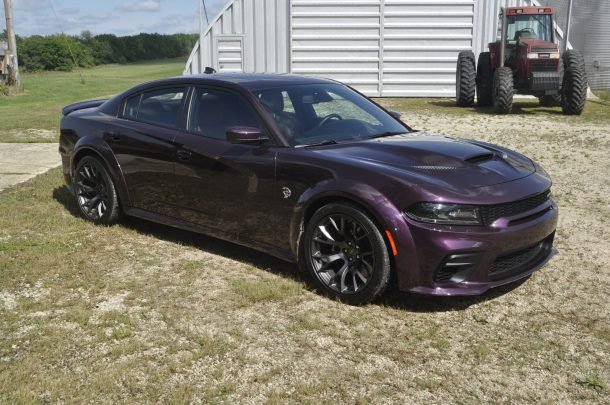
2020 Dodge Charger Hellcat Widebody Fast Facts
|
| 6.2-liter supercharged V8 (707 horsepower @ 6,000 rpm; 650 lb-ft @ 4,800 rpm)
Eight-speed automatic transmission, rear-wheel drive
12 city / 21 highway / 15 combined (EPA Rating, MPG)
19.0 city, 11.5 highway, 15.6 combined. (NRCan Rating, L/100km)
Base Price: $69,995 (U.S) / $88,240 (Canada)
As Tested: $82,755 (U.S.) / $93,870 (Canada)
Prices include $1,495 destination charge in the United States and $1,995 to $2,695 for freight, PDI, and A/C tax in Canada and, because of cross-border equipment differences, can’t be directly compared. |
Most large sedans exist to provide comfort and some level of luxury to their owners. Some have a bit of sport, and some are bought to haul humans while others are meant to coddle the driver, regardless of whether they’re sporty or not.
Then there’s the Dodge Charger Hellcat, which exists to kick ass while also being an easy commuter.
The justification behind the use of a big honkin’ forced-air V8 in this car is “because we can.” Even though Dodge and SRT haven’t shied away from injecting horsepower and fun into the available trims of its large sedan, it continues to offer Hellcats because market forces and/or regulation still allow it to do so and because some number of people will drop a lot of money on one of these monsters.
Not that I can disagree with their choice.
I mean, sure, I can nitpick and find flaws with the Hellcat, or gripe about its price. But it’s really hard to be harsh when one can vaporize a lot of rubber just by pulling over on an empty rural two-lane, holding the brake with the left foot, and then dropping the hammer before easing off the brakes. The car fishtails and herks and jerks its way forward while you make sure to keep it out of the ditch, all while using the rearview mirror to watch what was a sunny day become instantly cloudy with tire smoke – to the point that rear visibility is practically, though temporarily, nil.
At this point, giggles are induced.
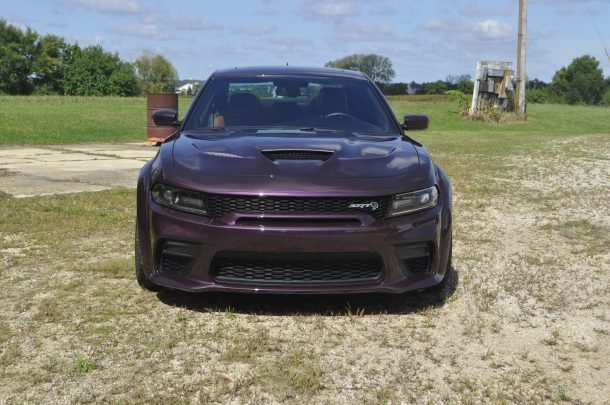
Turns out that 707 horsepower and 650 lb-ft of torque is its own kind of laughing gas.
Speaking of gas, the Hellcat burns it at a prodigious rate. But that’s hard to care about when you’re laying rubber.
As ferociously fast as the Hellcat as, as much as there’s a cool factor surrounding the kind of muscle sedan that is now a minority of the market, the best parts of the car may actually be the more mundane aspects.

For example, the SRT-tuned competition suspension with adaptive damping allows for a mostly compliant freeway ride. On the stiff side, sure, but never obnoxious. Indeed, if it wasn’t for the supercharger whine and a bit of drone from the 6.2-liter V8 when loafing at low rpms, you’d think you were just in a standard large sedan.
The same goes for the steering. It’s heavy but not annoyingly so, and it is never jumpy. The Charger just feels relaxed when you’re behaving.

That, to this author, is the Hellcat’s strength, even more than its power numbers or straight-line speed. Drive it gently and there’s very little in the way of comfort or comportment sacrificed at the altar of performance. It can be as much Bruce Banner as it is Hulk. Your choice.
Well, except when it comes to fuel economy. Even keeping a light foot won’t stop the thirst. Prepare your wallet accordingly – the combined mpg number is 15.
You can, of course, select Sport or Track modes to firm up the ride and improve handling, but even in those modes, the car still behaved well when driven lightly.
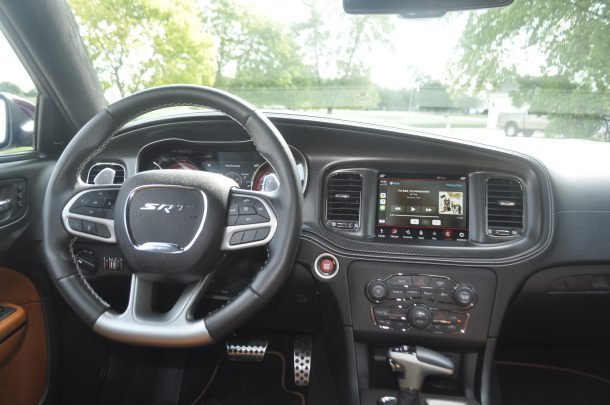
Inside, the cabin is pretty par for the Dodge course. Big knobs for audio and climate controls, integrated infotainment screen, and the generally solid Uconnect system. There are some unique SRT touches – including the fun-to-play-with performance pages in Uconnect – but the cabin, while appointed nicely enough and comfortable, doesn’t feel super special.
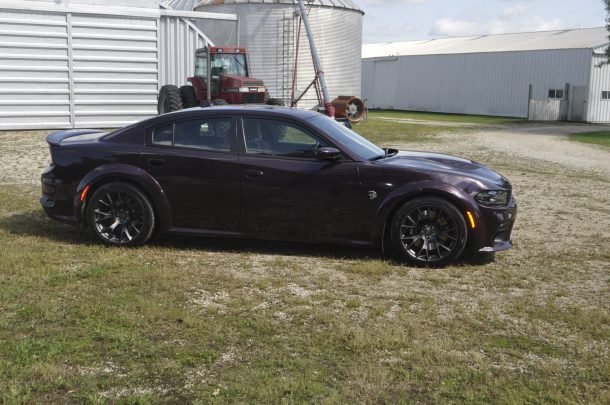
All that extra dough goes to the engine, suspension, tires, and brakes, apparently.
Which is fine. The interior is nice enough, and who cares about the type of stitching when you can smoke tires like a drag racer?
Looking at the features list, we see the usual suspects. Standard or available features include Apple CarPlay, line lock, Brembo brakes with black-painted calipers, anti-spin rear differential, launch assist, blind-spot and cross-path detection, heated and cooled front seats, heated rear seats, Android Auto, satellite radio, Wi-Fi hotspot, auxiliary port, USB ports, heated steering wheel, Hellcat interior badging, all-season performance tires (305 mm wide, 20-inch wheels), spoiler, projector headlights, LED DRLs, suede headliner, navigation, premium audio, sunroof, and upgraded wheels.
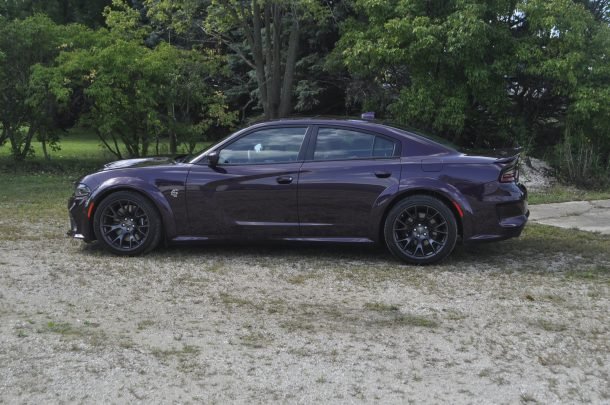
The Hellcat gets attention for its name and power and abilities. And rightfully so. But we shouldn’t lose focus on the fact that the Charger Hellcat is also capable of being a comfortable and family-friendly sedan when the driver wants it to be.
That’s almost as impressive as the power numbers. It would’ve been easy for Dodge to drop this engine in and create a car that wasn’t happy unless it was being hooned. Instead, the brand created a sedan that can knock your socks off just as easily as it can get you to grandma’s house in comfort.
Now that’s fun for the whole family.
[Images © 2021 Tim Healey/TTAC]
Related
 We continue our 2007 and 1997 sedan series with its fourth installment. We’ve covered V6 Japanese sedans from two different decades, as well as American-branded entries from 2007. Today we step back to the midsize V6 sedan class of 1997. The Big Three beckon you with medium build quality, equipment, and value for money in a midsize sedan; a segment in which only GM deigns to participate in 2020. Let’s go.
We continue our 2007 and 1997 sedan series with its fourth installment. We’ve covered V6 Japanese sedans from two different decades, as well as American-branded entries from 2007. Today we step back to the midsize V6 sedan class of 1997. The Big Three beckon you with medium build quality, equipment, and value for money in a midsize sedan; a segment in which only GM deigns to participate in 2020. Let’s go. 1997 saw the first generation Dodge Intrepid wrap up its run, arguably as the most stylish car of this trio. It was replaced by a larger second generation the following year which seemed built even more poorly than the first-gen. Developed over its tenure, by 1996 Intrepid had standard ABS, and an Autostick shift-it-yourself feature for the four-speed automatic. Today’s car is well-equipped ES trim and features the larger 3.5-liter V6 good for 214 horsepower. You’ll pay around $22,910.
1997 saw the first generation Dodge Intrepid wrap up its run, arguably as the most stylish car of this trio. It was replaced by a larger second generation the following year which seemed built even more poorly than the first-gen. Developed over its tenure, by 1996 Intrepid had standard ABS, and an Autostick shift-it-yourself feature for the four-speed automatic. Today’s car is well-equipped ES trim and features the larger 3.5-liter V6 good for 214 horsepower. You’ll pay around $22,910.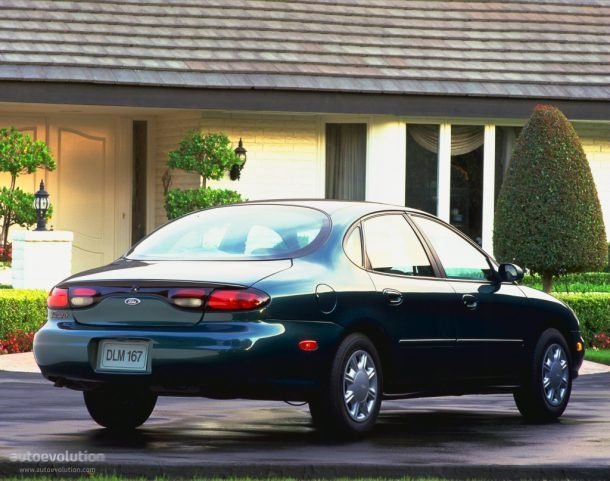 The third-gen Taurus was in its second model year in 1997, as its design went from aero three-box to ovoid, customers were less than thrilled, and Ford began to pay less and less attention to its mass-market family car. The model’s first two years saw a different trim lineup than the latter two, with G, GL, LX, and SHO as the initial group. Base models received a 3.0-liter Vulcan V6, but the LX stepped up to the 3.0 Duratec mill that made 200 horses (instead of 145). Today’s LX sends those horses through a four-speed AX4N automatic. Yours at $21,610.
The third-gen Taurus was in its second model year in 1997, as its design went from aero three-box to ovoid, customers were less than thrilled, and Ford began to pay less and less attention to its mass-market family car. The model’s first two years saw a different trim lineup than the latter two, with G, GL, LX, and SHO as the initial group. Base models received a 3.0-liter Vulcan V6, but the LX stepped up to the 3.0 Duratec mill that made 200 horses (instead of 145). Today’s LX sends those horses through a four-speed AX4N automatic. Yours at $21,610.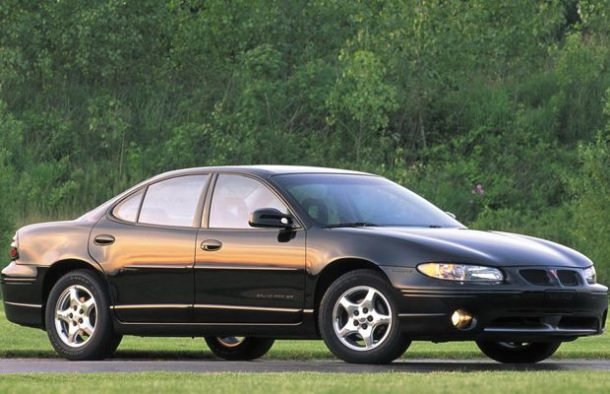 The popular and cladded Grand Prix was newly in its sixth generation for the ’97 model year. Aggressive in styling and with Pontiac’s Wide-Trac stance, the Grand Prix was a go-to for many family sedan buyers at the time. Just two trims were available on Grand Prix, the base SE in sedan guise, or GT in coupe or sedan forms. The GT sedan (today’s pick) uses the Buick 3800 V6 good for 195 horsepower. Ask is about $20,319.
The popular and cladded Grand Prix was newly in its sixth generation for the ’97 model year. Aggressive in styling and with Pontiac’s Wide-Trac stance, the Grand Prix was a go-to for many family sedan buyers at the time. Just two trims were available on Grand Prix, the base SE in sedan guise, or GT in coupe or sedan forms. The GT sedan (today’s pick) uses the Buick 3800 V6 good for 195 horsepower. Ask is about $20,319.






